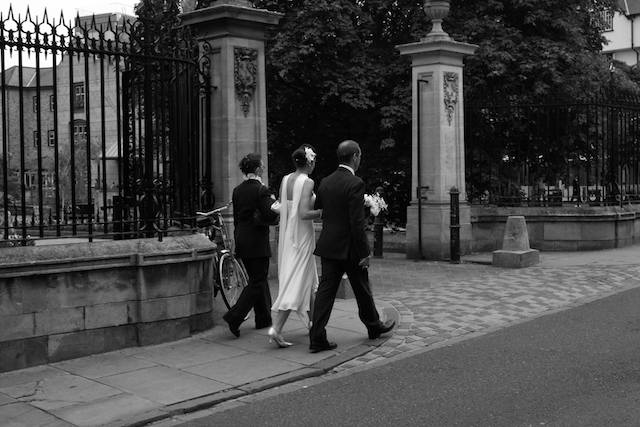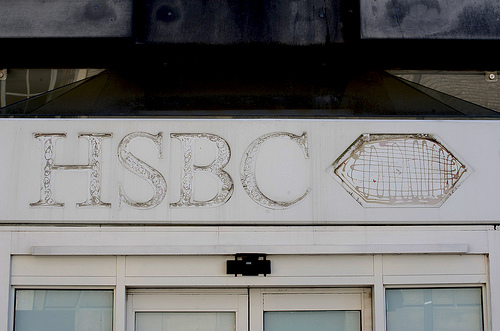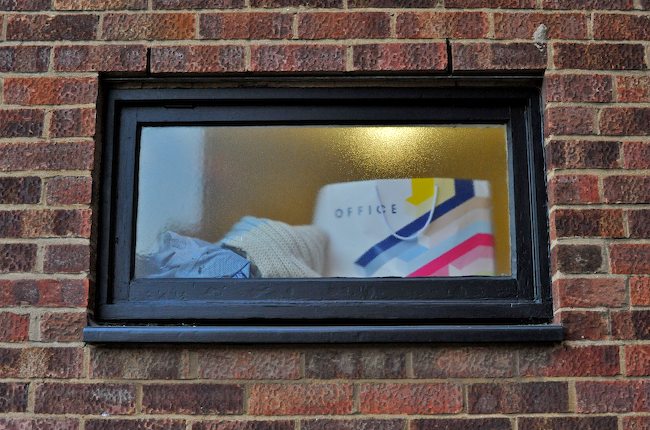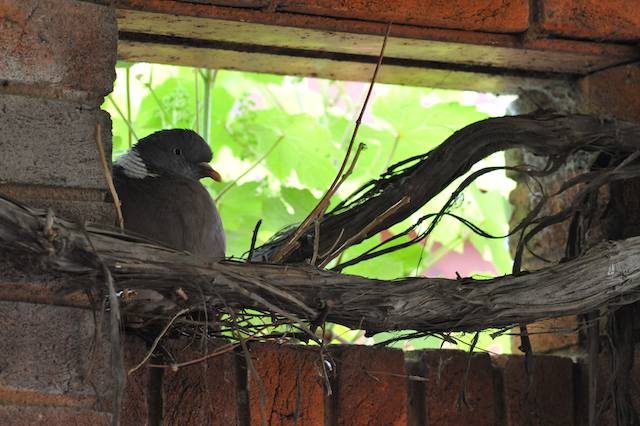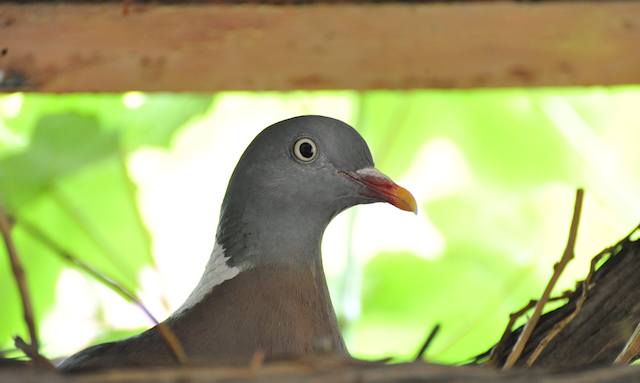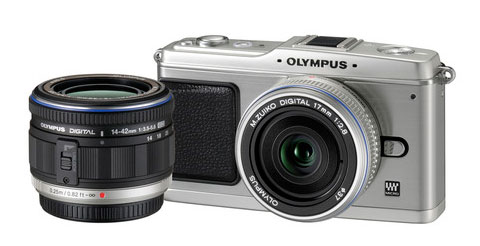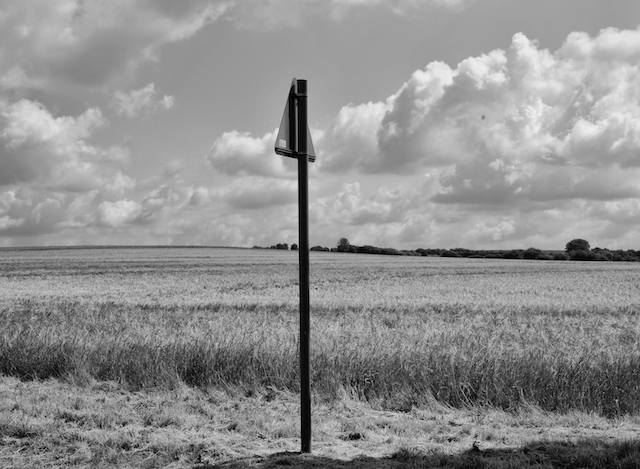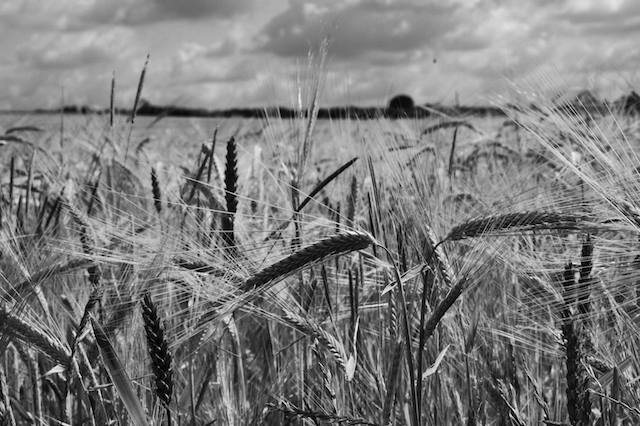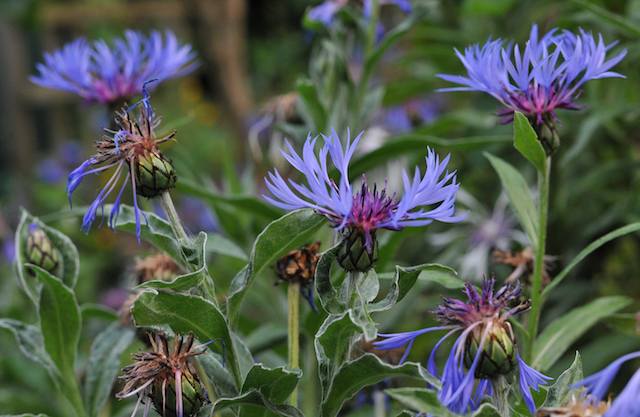Flickr version here.
Category Archives: Photography
The Wedding Party
Spotted in town today. Flickr version here.
Shadow banking
The Office
Coming home to roost
This morning, Mr & Mrs Pigeon decided that they would nest on our vine. Mrs perched herself sulkily, like so…
… and waited for her mate to bring her twigs, most of which she inspected critically and dropped. But he persisted and after a couple of hours, she had something to sit on. We remonstrated with her that this was not a good place to settle, on account of our two cats, but she greeted us with a totally insouciant air, thus:
Hmmm… This is Not Good. Our cats are diligent hunters.
Back to the future
Many moons ago, one of my favourite cameras was an Olympus Pen. It was light, unobtrusive and had terrific optics. Well, guess what? Its spirit lives on.
Finally, Olympus has introduced its long-awaited Micro Four Thirds camera, and the E-P1 looks a lot like 1959. It’s a compact, slick-looking retro model that pays homage to the company’s PEN-series cameras that had their debut 50 years ago.
Think of the E-P1 as the love child of a point-and-shoot camera and a digital single-lens reflex. Olympus says the 12.3-megapixel E-P1, the world’s smallest interchangeable lens camera, marries the image quality of D.S.L.R. models with high-definition video capabilities found on smaller cameras. It also includes 16-bit stereo audio.
The E-P1 will be available in July as a body-only option $750 as well as in two kits: one with a Zuiko 14mm-42mm f3.5-5.6 $800 3X zoom lens and another with a 17mm f2.8 $900 prime lens.
Wrong place, wrong man?
The controversy over Robert Capa’s famous war photograph has re-ignited. Fascinating account in today’s Observer about it.
Capa’s dramatic “The Falling Soldier”, the photograph of a Spanish militiaman being killed by a bullet as he charges down a slope, was taken miles away from where the civil war was being fought at the time, according to a university lecturer, José Manuel Susperregui.
Susperregui, who teaches communications studies at the University of the Basque Country in northern Spain and specialises in photography, has analysed a series of pictures taken by the Hungarian-born war photographer and claims to have discerned a common countryside in the background. He claims that the real location of ‘The Falling Soldier’ is far away from the Cerro Muriano front where Capa claimed that the picture was taken.
Susperregui’s research, published in his book Sombras de la Fotografía, provides compelling evidence that ‘The Falling Soldier’ was photographed in Llano de Banda, an area of countryside close to the small village of Espejo, southern Spain, some 25 miles from Cerro Muriano…
Although the land itself, which was arable when Capa was there, has had olive trees growing on it for the past three decades, the skyline created by a nearby set of hills closely matches that of the celebrated war photographer's own pictures.
"The landscape around Cerro Muriano looks nothing like that in the photographs," said Susperregui. "I have no doubt that this was taken in Llano de Banda."
Onwards and Upwards!
Flickr version here.
Jam tomorrow?
A corny image? Flickr version here.
Lens test
Taken just now with a Zeiss 50mm, f1.4 Planar. Amazing lens. Flickr version here.


